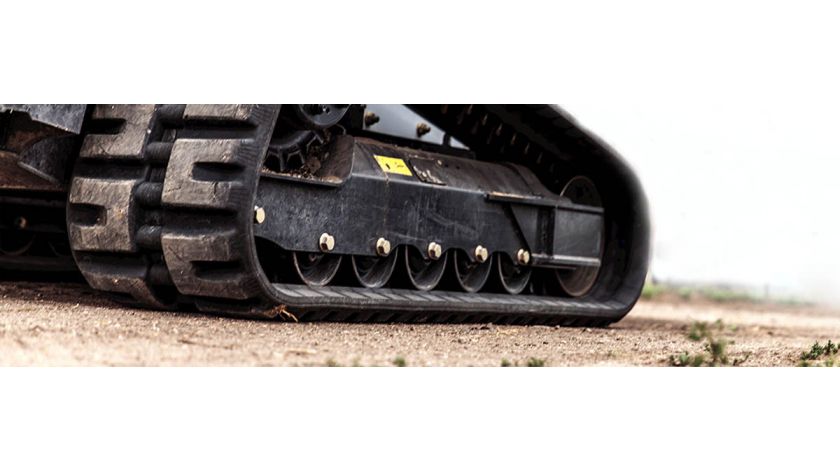
When it comes to caring for the tracks on your mini excavators and compact track loaders, TVH is here to help. Rubber tracks are the most expensive wear item on your machine. And while they take a beating on a daily basis, they are not designed to be abused or ignored. The average life of a rubber track is between 1,200 and 1,600, but can be as high as 2,000 if they’re maintained properly. Neglecting your tracks can result in a life span as low as 400 hours. To get the best possible return on your investment, it’s important that you follow some guidelines to help achieve the longest, most productive life possible from your tracks. To help you, we’ve put together some tips for caring for your tracks.
-Cracks are not your friend. Although cracks are a natural part of rubber’s aging process, you want to avoid anything that will cause them to happen prematurely or increase their size. Avoid working on rough terrain, scraping against walls and curbs (Curbing), and minimize exposure to high temperatures as much as possible. Examine the outside of the track for damage. Rubber track treads accumulate cuts and missing chunks over their lifetime, but these are often cosmetic and may not affect performance.
-Watch for deep cuts — about 4 in. or larger — that dig into the core of the track where the inner cords are embedded. Bad cuts such as this may get worse and make track replacement necessary. Also check the tread depth. Rubber track manufacturers generally produce tracks to be usable until there is no tread left. When wear makes it difficult or impossible to properly tension tracks, then it’s time to replace them.
-Fix track alignment. Just like with other vehicles, misaligned tracks will wear out quicker than those that are properly aligned.
-Regularly inspect your tracks and undercarriage. You should have daily, monthly and quarterly inspection schedules. In addition to checking for damage to the tracks and undercarriage, you should also be cleaning out debris from them. Damage to undercarriage components such as the sprockets, rollers and idlers can affect the performance and longevity of your tracks.
-It’s important that you replace your tracks in pairs. Replacing only one at a time can cause alignment issues and damage the undercarriage. Above all, avoid running over the “Three Rs,” rocks, roots and rebar. Inventory the site before you start work and remove these tread killers if necessary.
-Quality and cost should be considered. While it may be tempting to purchase the cheapest tracks you can find, just know that extremely cheap tracks are typically of a lower quality, resulting in faster wear and less use before they must be replaced. Make sure you are purchasing tracks that are also covered by a warranty so that if something does happen, you will have protection.
-Damage to the sprockets, which pull the track, and/or lugs can result in a track that skips or de-tracks. Making sure that both your sprocket and lugs are in good condition will help extend the life of your tracks.
-Tracks not in use need to be stored properly. If they’re off the machine, they should be stored on their side in a relaxed position in a cool, dry environment. If the tracks are on a machine that isn’t being used, the vehicle should be driven at least once every two weeks for five minutes. This will help maintain track flexibility and prevent them from becoming misshapen.
By following these guidelines, you can ensure that you get the best possible life out of your rubber tracks. When it does come time to replace them, turn to TVH. We carry high-quality tracks that meet or exceed OEM specifications. With more than 600,000 parts for skid steers, compact track loaders and mini excavators with more to come, you can be assured you’ll always find what you need.